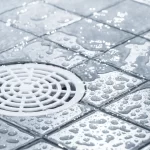Recognizing and Addressing Sump Pump Issues: A Comprehensive Guide
Sump pumps are essential devices for safeguarding your home against water damage, particularly in areas prone to flooding or with high water tables. They work by collecting excess water from around your home’s foundation and directing it away through a discharge pipe. Given their critical role, it’s important to ensure that your sump pump is functioning properly at all times. Here’s a detailed guide to recognizing signs that your sump pump might need attention and steps to address these issues.
1. Frequent Cycling On and Off
Understanding the Issue: A sump pump should operate intermittently, turning on only when water levels exceed a certain threshold and turning off when the water level drops. Frequent cycling—where the pump turns on and off repeatedly within a short period—can indicate several potential problems.
Possible Causes:
- Float Switch Problems: The float switch is responsible for signaling the pump to turn on or off based on water levels. If it’s malfunctioning or improperly calibrated, it can cause the pump to cycle frequently. The float may be getting stuck or moving too easily, leading to erratic behavior.
- Clogged Discharge Line: If the discharge line is blocked, the pump may turn on and off as it struggles to push water out. This could be due to debris, ice, or other obstructions in the discharge line.
- Pump Capacity Issues: If the pump is too small for the volume of water it needs to handle, it may become overwhelmed and cycle frequently as it tries to keep up.
Action Steps:
- Inspect the Float Switch: Check if the float switch is free to move and properly calibrated. Ensure it’s not getting caught on any obstacles or stuck in a position.
- Clear the Discharge Line: Inspect the discharge line for any obstructions and clear them if present.
- Evaluate Pump Capacity: Assess whether the pump’s capacity is adequate for the amount of water it needs to handle. If not, consider upgrading to a pump with a higher capacity.
2. Extended Run Times
Understanding the Issue: A sump pump that runs for an unusually long time, especially when there hasn’t been recent rainfall or high water levels, can be a sign of an underlying problem. Prolonged operation can strain the pump and reduce its lifespan.
Possible Causes:
- Stuck Float Switch: A stuck or malfunctioning float switch might keep the pump running longer than necessary. If the switch doesn’t signal the pump to turn off, it can lead to extended run times.
- High Water Table: An unusually high water table may cause the pump to run more frequently and for longer periods. This is often due to groundwater levels rising higher than normal.
- System Malfunction: Internal components of the pump, such as the impeller or motor, might be malfunctioning, causing it to run continuously.
Action Steps:
- Inspect the Float Switch: Ensure the float switch is functioning properly and not stuck in the “on” position.
- Check Water Table Levels: Monitor the water table around your home and determine if it’s higher than usual. If this is a frequent issue, you might need a more powerful pump.
- Examine Pump Components: Have a professional inspect the pump’s internal components to identify and address any malfunctions.
3. Failure to Activate
Understanding the Issue: A sump pump that doesn’t activate when needed can lead to significant flooding and water damage. This is a critical issue that requires immediate attention to prevent serious damage to your home.
Possible Causes:
- Power Failure: If the pump isn’t receiving power due to an electrical issue or power outage, it won’t function properly. Check for any electrical problems or ensure the pump is plugged in and receiving power.
- Float Switch Issues: If the float switch is not working correctly, it might fail to trigger the pump. This can be due to mechanical failure or obstruction.
- Pump Failure: Mechanical failures within the pump, such as a broken motor or impeller, can prevent it from turning on.
Action Steps:
- Check Power Supply: Ensure the pump is properly connected to a power source and that there are no electrical issues. Test the power outlet and any related circuits.
- Inspect the Float Switch: Verify that the float switch is operational and not obstructed. Ensure it can move freely and is not stuck.
- Professional Assessment: If the pump still doesn’t activate, contact a professional to diagnose and repair any internal issues.
4. Excessive Noise Levels
Understanding the Issue: Sump pumps are inherently noisy when operating, but excessive or unusual noise can indicate a problem. Loud or irregular sounds can signal mechanical issues or potential damage.
Possible Causes:
- Debris or Obstructions: Foreign objects or debris inside the pump or discharge pipe can cause abnormal noise. The impeller or other moving parts might be obstructed.
- Worn Components: Over time, mechanical components like bearings, impellers, or motors can wear out and cause loud operation.
- Lack of Lubrication: Some sump pumps require periodic lubrication of moving parts. Lack of lubrication can lead to increased noise and wear.
Action Steps:
- Clear Debris: Inspect and clean the pump and discharge pipe to remove any debris or obstructions. Ensure that the impeller and other moving parts are free of obstructions.
- Check for Worn Parts: Examine the pump for signs of wear and tear. If components appear damaged or worn, they may need replacement.
- Lubricate Moving Parts: If applicable, lubricate moving parts according to the manufacturer’s recommendations.
Conclusion
Maintaining your sump pump in optimal condition is essential for protecting your home from water damage. Regular inspections and attention to these signs of potential issues can help you address problems early and ensure that your sump pump remains reliable. If you encounter any of these issues or if you’re unsure about the condition of your sump pump, it’s best to consult with a licensed plumbing professional. They can provide a comprehensive inspection, perform necessary repairs, and offer advice on maintaining your sump pump for years of reliable service.






